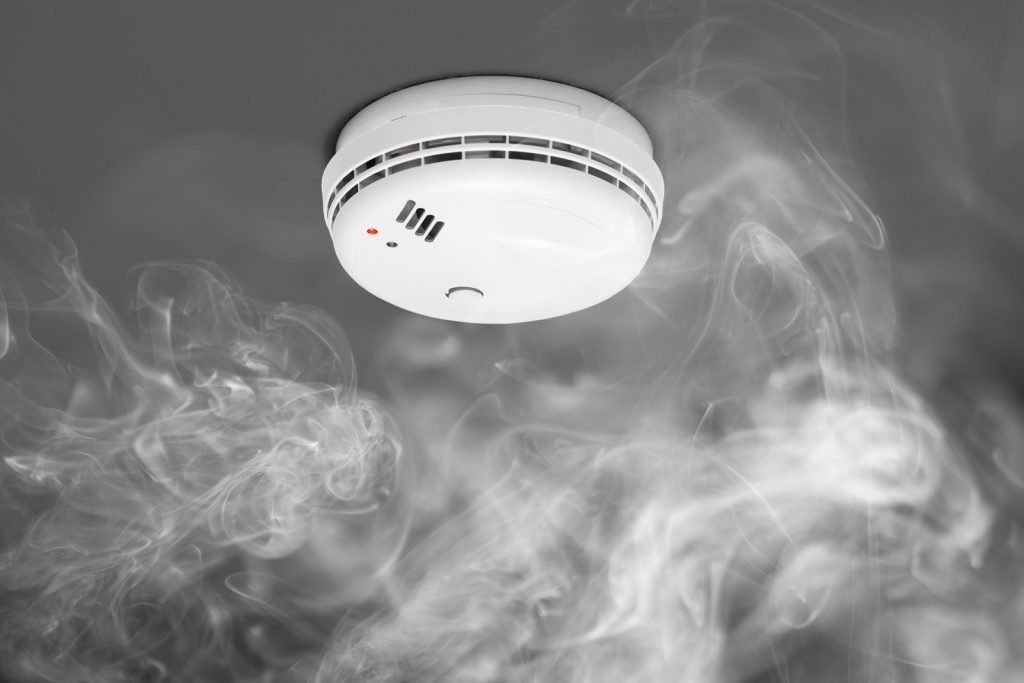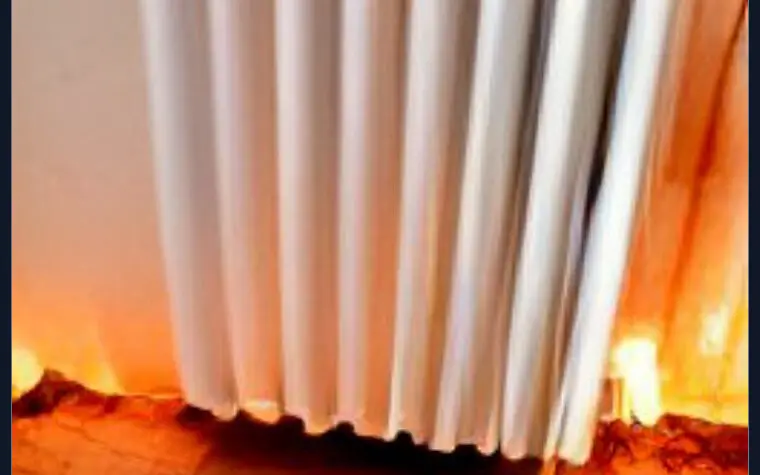As radiators are placed throughout the house and used to heat up the place, many people ask if one can actually start a fire. Although there are some furniture arrangements that are not recommended, there is more chance of a water radiator causing some flooding rather than starting a fire.
However, they can cause burns if not installed properly or kept in good working condition. Easily flammable materials should be kept well away from them. If needed, you should move the radiator to a safer location in the room.
Can a radiator start a fire?
An electric radiator can definitely start a fire. But a radiator that has hot water going through is not likely to catch fire as the temperature of the water is not hot enough. Electric radiators cause fires when they overheat or something flammable is placed on or close to them.
No gas passes through the pipework in a central heating radiator so nothing can be ignited. However, some items made of soft materials can burn, get marked or discoloured due to heat from the radiator.

Radiator too hot
Even if a radiator is too hot, it is unlikely to become a fire hazard on its own. However, furniture pressed up close against a scalding hot radiator can be damaged depending on the material. A radiator that is too hot could be due to a faulty diverter valve within the boiler that has become stuck with debris. Or it could be a temperature sensor or thermostat set too high.
If a radiator is too hot in one room, whereas the others in the house are working fine, the radiators may need balancing in the house so they all get the right amount of heated water. But first adjust the TRV on the problem radiator, if you have one.
What items can catch fire on a radiator?
Traditional radiators fed by a central heating system can reach temperatures from 60⁰ to 80⁰ but now temperatures are below 60 degrees so they are more efficient. The water in a radiator can get hot enough to burn your skin if touched but this isn’t hot enough to burn paper usually.
People like to place socks, gloves, hats, scarves or mittens on radiators to defrost them and although these don’t tend to catch fire, if the items are thin or made from easily combustible, you should not risk putting them on top of the radiator.
Can a shelf over a radiator catch fire?
Disclosure: Some of the links below are Amazon affiliate links. This means that, at no cost to you, we may earn an affiliate commission if you click through the link and complete a purchase.
Radiator shelves and covers made of sturdy materials such as solid or engineered wood are fine to use over a radiator as long as they aren’t directly touching it. In fact, many shelves are sold especially for this purpose and they deflect the rising heat back into the room. They come in different sizes to suit the width of the radiator so won’t look out of place.
Electronics on a radiator
Electronic products like TV’s placed above a radiator is common and as long as there is adequate distance between them, it should be ok. However, check with the TV manufacturer’s manual to see the temperature tolerance of the equipment. Radiators can reach between 40-60 degrees so sensitive electronic products directly above them can be damaged.
The solution would be to install a shelf in between to protect the electronic items. This should protect the warranty of the product which otherwise may be voided being operated outside its tolerance range.
Make sure to keep wires from TV’s, lamps, audio equipment, etc from touching the radiator. As they could melt over time if left there.
What furniture can catch fire from a radiator?
Big and heavy furniture is not likely to catch fire but there is the possibility of staining and discolouration of the furniture. The main issue here is the reduction in heat from the radiator circulating around the room. Furniture covering part or most of the radiator can severely impact the room heating up quickly enough.
If you have no other choice of space, make sure to leave a couple of feet from the radiator to the furniture.

Radiators can discolour items
Although most items will not catch fire, the heat from a radiator is likely to discolour something either touching or being very close to it. For example, you will notice sofas made of certain materials such as leather immediately in front of the radiator will look aged sooner rather than later if not properly protected. Positioning it too close to a radiator will cause the leather to dry out and crack.
Best Smart Radiator Valves: Efficient Home Heating in 2023
Almost every home has at least one radiator which could be covered by hanging curtains. Apart from not heating the room very well when covered, the radiator is not likely to start a fire.
Summary
Radiators have been providing warmth for a very long time and are a common source of heat in colder seasons. However, safety can be a concern, especially when it comes to items placed on or near them. One of the main concerns is whether electric or steam radiators can catch items on fire.
In general, it’s not a good idea to place most items on any type of radiator as they get very hot and may damage objects or cause fires. With steam radiators, steam doesn’t cause items to catch fire, but malfunctions due to improper installation or dust and debris buildup can lead to fires. Additionally, the heat generated by steam radiators can dry out items, making them more flammable.
Electric radiators, especially older models, can overheat and cause fires. Placing fabric over an electric radiator can also cause fabric items to become burned or scorched.
While some recommend draping a steam radiator with a blanket or sheet for temporary climate control, it’s best to avoid draping anything over electric radiators. If you want to cover your radiator for aesthetic reasons, consider purchasing a radiator cover designed for that purpose. These covers provide an attractive accent while adding a layer of protection between the radiator and your household items.
